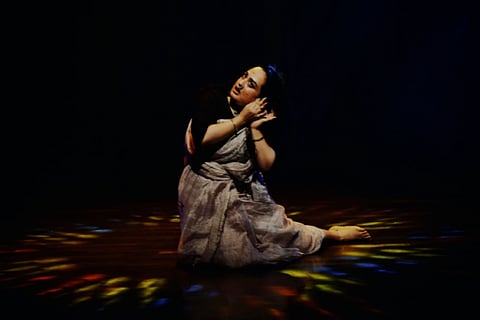
- LIFESTYLE
- FASHION
- FOOD
- ENTERTAINMENT
- EVENTS
- CULTURE
- VIDEOS
- WEB STORIES
- GALLERIES
- GADGETS
- CAR & BIKE
- SOCIETY
- TRAVEL
- NORTH EAST
- INDULGE CONNECT

Breathe is a solo dance performance by Shoma Kaikini that offers a calm, thoughtful experience instead of a usual stage show. Using Indian classical music and dance, Shoma creates each moment live on stage, without fixed steps or set routines. The performance is about being present, slowing down and connecting with your breath.
We get chatty with Shoma to uncover the idea behind the performance, the role of music in such a spontaneous performance, what she thinks the audience can take away from the performance and lots more…
Your upcoming performance is titled Breathe. It feels less like a traditional dance recital and more like a meditative experience. What inspired this concept?
In 2024, I went through a period of deep self-reflection. I turned 40 in November 2023 and that milestone made me take a long, hard look at my life. I realised that I was stuck in patterns — things I’d been struggling with for years — and I didn’t feel emotionally or financially stable. That process led to a revelation about the nervous system. It’s like an automated software in our body — and unless we actively work on regulating it, it just keeps repeating the same patterns.
The simplest and most effective way to begin regulating the nervous system is through the breath. But most of us aren’t aware of how we breathe. It just happens, unconsciously. So, Breathe emerged from that awareness — the need to slow down, to pause and to reconnect with something as basic and powerful as breathing.
You mentioned that the piece involves improvisation. How does that work within the framework of classical dance?
Yes, improvisation is central to this work. It’s like what we see in comedy improv, which is quite popular in Bengaluru. People enjoy it because the performers are creating at the moment. I’ve been exploring improvisation within the vocabulary of classical dance — particularly kathak — for the past two years.
When I improvise, I have to be 100 percent present and something beautiful happens — the audience also becomes present. They start to breathe with me, because they’re watching something that’s unfolding in real time. There’s no script, no choreography, just presence and that in itself creates a meditative effect.
In such a spontaneous setting, what role does music play in guiding you on stage?
Music is the stimulus. Think about how we instinctively move at weddings — if bhangra is playing, we move a certain way. If it’s hip-hop, we respond differently. We all have this ability to adjust our energy based on the soundscape around us. For Breathe, I’m using Indian classical music exclusively. One of the tracks is a 30-minute rendition by my grand-uncle, pandit Dinkar Kaikini, who was a very respected vocalist. I’m also dancing to a track sung by his daughter, Aditi Upadhyay. There’s a strong personal connection, which adds so much depth to the experience. Their voices are meditative and I respond to that energy as I move.
So much of the piece is built on spontaneity and instinct. Did that ever come into conflict with your kathak training?
Not at all. Kathak is actually designed for flight — it has a strong structure that allows you to improvise once you’ve mastered the fundamentals. I often compare it to building a kite: once you’ve constructed it well and understand how it works, you can let it soar. I’ve also trained in bharatanatyam for nine years and that adds another layer to my practice. Bharatanatyam has its own kind of grace, structure and expressive quality. So, I bring both traditions into my work and use them to build a vocabulary that’s personal but still accessible to audiences.
The title Breathe itself suggests a pause, a moment of stillness. What would you like the audience to take away from the performance?
During the performance, I’ll be narrating a letter I’ve written to the audience — it’s a love letter, really. I want them to feel seen and comforted. We’re all juggling so many things — work, relationships, family and health — and sometimes it feels like everything is slipping. I want the audience to feel like, “Hey, it’s okay. We’ve got this.” I want to remind them that they’re not alone. There’s also a yogic practice called trataka, where you gaze softly at a candle flame. It calms the nervous system without you needing to do anything actively. Breathe works the same way. The audience focuses on me — just one dancer on stage for most of the performance — and that stillness, that singular focus, brings about a natural sense of calm.
INR 500 onwards. July 6, 6.30 pm. At BIC, Domlur.
Email: alwin@newindianexpress.com
X: @al_ben_so